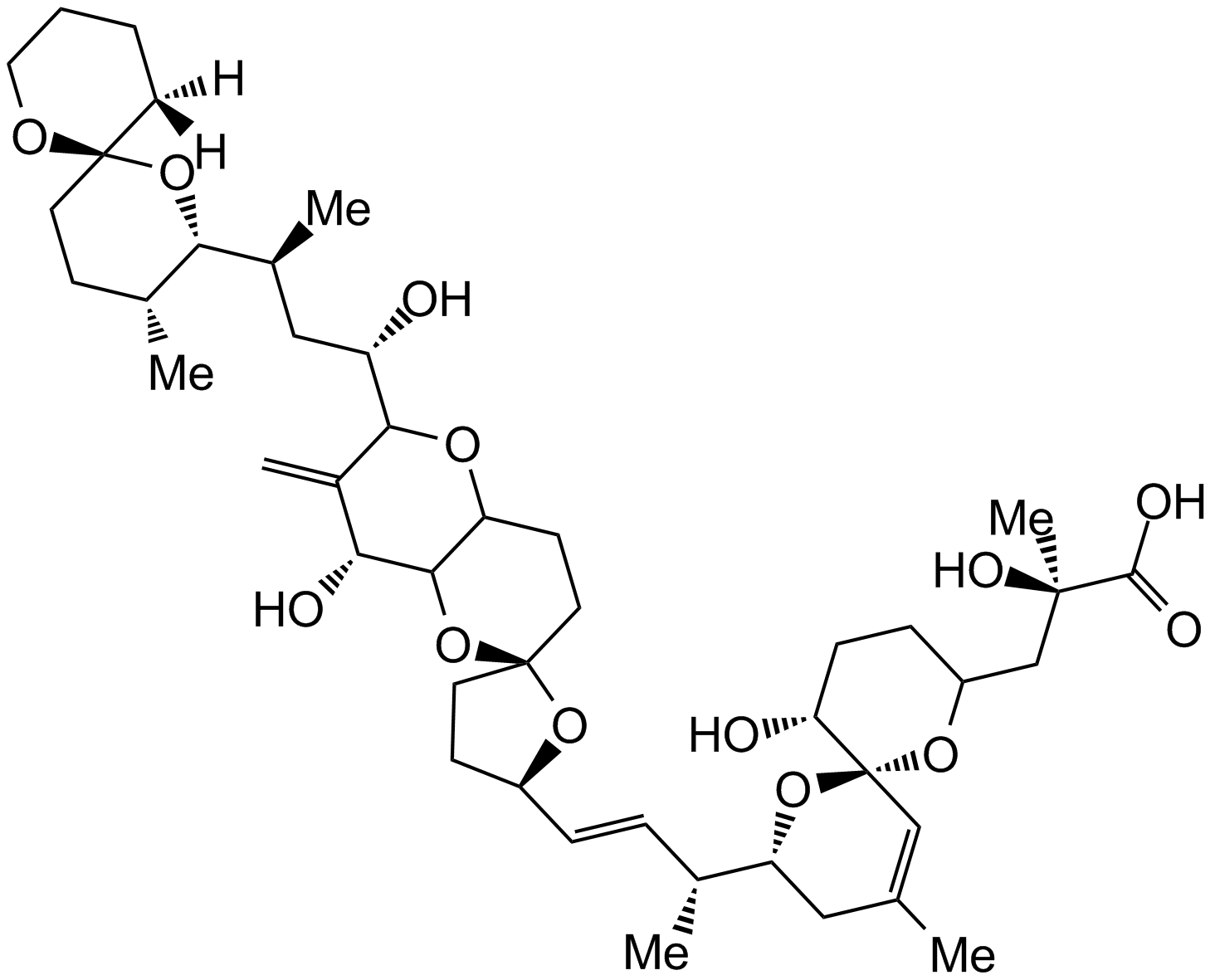Okadaic acid |
| Catalog No.GC16958 |
A potent inhibitor of protein phosphatases
Products are for research use only. Not for human use. We do not sell to patients.

Cas No.: 78111-17-8
Sample solution is provided at 25 µL, 10mM.
Okadaic acid is a marine sponge toxin which potently inhibits certain serine/threonine protein phosphatases. This cell permeable inhibitor targets the multiple isoforms of PP1 (IC50 = 10-50 nM), both isoforms of PP2A (IC50 = 0.5 nM) and PP3 (IC50 = 4 nM).[1],[2],[3] It is a very weak inhibitor of PP2B (IC50 > 2 μM) and does not inhibit PP2C or other phosphatases.[1],[3 ]Presumably through these actions, okadaic acid is a potent carcinogen and induces tau phosphorylation.[4],[5] In sponge, okadaic acid plays a role in defense, inducing apoptosis in symbiotic or parasitic annelids.[6]
Reference:
[1]. Bialojan, C., and Takai, A. Inhibitory effect of a marine-sponge toxin, okadaic acid, on protein phosphatases. Specificity and kinetics. Biochemistry Journal 256, 283-290 (1988).
[2]. Gupta, V., Ogawa, A.K., Du, X., et al. A model for binding of structurally diverse natural product inhibitors of protein phosphatases PP1 and PP2A. Journal of Medicinal Chemistry 40, 3199-3206 (1997).
[3]. McCluskey, A., Sim, A.T.R., and Sakoff, J.A. Serine-threonine protein phosphatase inhibitors: Development of potential therapeutic strategies. Journal of Medicinal Chemistry 45(6), 1151-1175 (2002).
[4]. Suganuma, M., Fujiki, H., Suguri, H., et al. Okadaic acid: An additional non-phorbol-12-tetradecanoate-13-acetate-type tumor promoter. Proceedings of the National Academy of Sciences of the United States of America 85, 1768-1771 (1988).
[5]. Zhang, Z., and Simpkins, J.W. Okadaic acid induces tau phosphorylation in SH-SY5Y cells in an estrogen-preventable manner. Brain Research 1345, 176-181 (2010).
[6]. Schröder, H.C., Breter, H.J., Fattorusso, E., et al. Okadaic acid, an apoptogenic toxin for symbiotic/parasitic annelids in the demosponge Suberites domuncula. Applied and Environmental Microbiology 72(7), 4907-4916 (2006).
Average Rating: 5 (Based on Reviews and 30 reference(s) in Google Scholar.)
GLPBIO products are for RESEARCH USE ONLY. Please make sure your review or question is research based.
Required fields are marked with *





